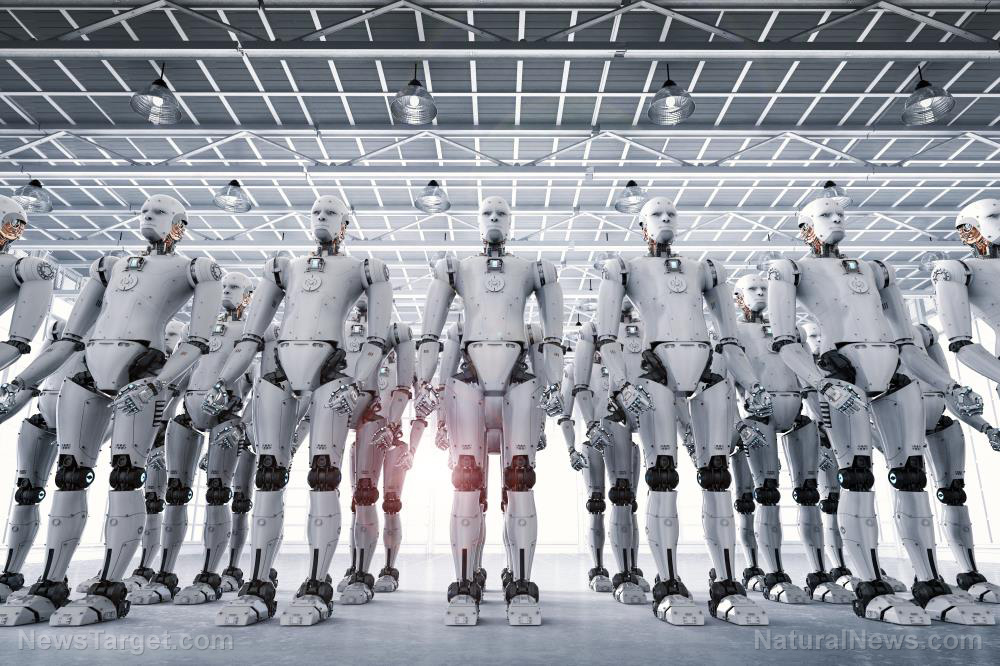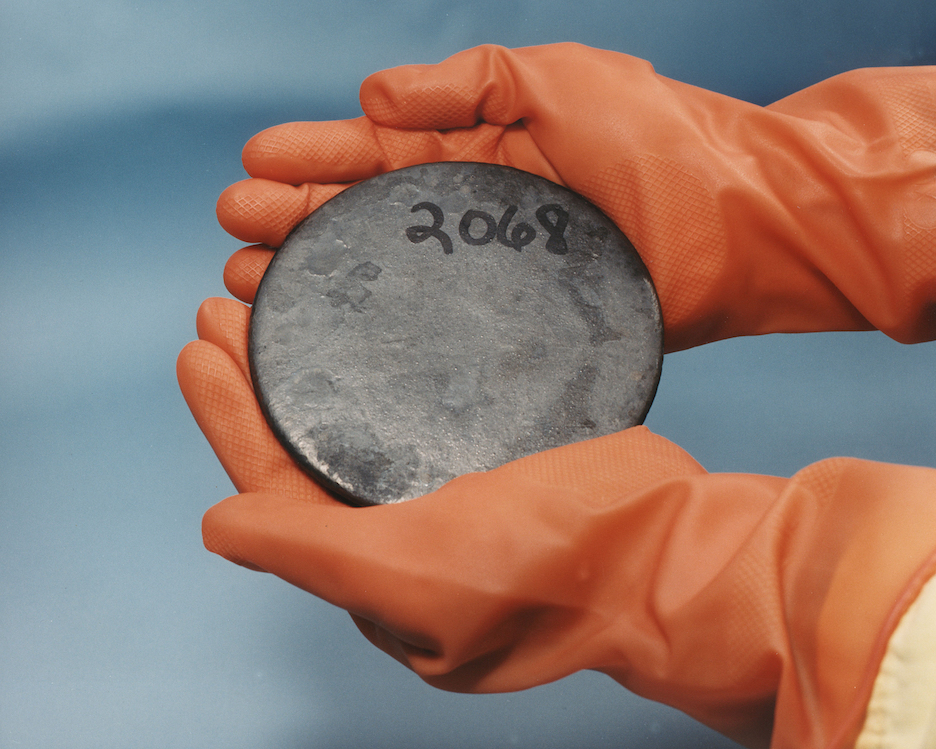China’s XPeng unveils “Iron” humanoid robot: A leap toward AI workforce revolution or a step toward dystopia?
11/11/2025 / By Kevin Hughes

- XPeng unveiled its next-gen “Iron” humanoid robot at its 2025 AI Day, featuring bionic muscles, flexible skin and an AI “brain” powered by three Turing AI chips. The 178 cm tall, 70 kg robot has 82 degrees of freedom (DOFs) – including 22 in its hands – allowing near-human dexterity and fluid movement.
- The robot’s hyper-realistic design sparked conspiracy theories, prompting XPeng to release footage proving its mechanical internals. Critics warn of mass labor displacement, with robots potentially replacing millions in service, elderly care, hospitality and education jobs.
- XPeng claims the robot follows a “Fourth Law” ensuring private data never leaves the device, but skeptics doubt corporate-government trustworthiness given past surveillance abuses.
- Despite civilian marketing, the robot’s Turing AI chips and “physical-world foundation model” suggest military applications, aligning with U.S. and Chinese AI combat investments. Embedded kill switches could allow remote shutdowns or reprogramming, raising fears of AI-driven assassinations or suppression.
- Rapid rollout (millions of robots by 2025) mirrors Klaus Schwab’s “Fourth Industrial Revolution,” fueling fears of AI-driven depopulation, mass unemployment, and surveillance control. The technology poses a critical question: Will AI liberate humanity—or enslave it in a dystopian, post-human future?
Chinese electric vehicle (EV) maker XPeng has unveiled its next-generation “Iron” humanoid robot at its 2025 AI Day, showcasing unprecedented advancements in robotics that blur the line between machine and human.
The lifelike robot comes equipped with bionic muscles, flexible skin and an AI “brain” powered by three Turing AI chips. While it represents a major milestone in the race toward automation, it also raises urgent ethical and societal concerns about AI-driven labor displacement, surveillance and the potential weaponization of humanoid technology.
BrightU.AI‘s Enoch engine defines a humanoid robot as a type of robot designed to resemble the human form, possessing human-like features such as a head, torso, limbs and sometimes even a face. They are engineered to interact with their environment and perform tasks in a manner similar to humans, often with the aim of assisting or collaborating with people in various settings.
The 178 cm tall, 70 kg Iron robot stunned audiences with its eerily fluid movements, prompting skepticism that a human might be inside the suit. XPeng CEO He Xiaopeng addressed doubts head-on, releasing a video demonstrating the robot’s mechanical internals.
“If you were there yesterday among the more than 500 friends and media at the scene, you wouldn’t think it was a human,” He said. “But through video alone, it’s hard to see clearly.” To prove his point, engineers unzipped the robot’s back, revealing its intricate mechanical skeleton.
The robot features 82 degrees of freedom (DOFs) – far exceeding most competitors – including 22 DOFs in its hands, allowing for near-human dexterity. Its full-solid-state battery (an industry first for humanoids) ensures lightweight efficiency and safety.
Will XPeng’s Iron herald progress or peril?
XPeng claims Iron will first enter commercial service roles, such as reception, shopping assistance and patrolling, with mass production slated for late 2026. But analysts warn that such robots could soon replace millions of human jobs, accelerating global unemployment crises.
“Highly human-like AI robots have strong potential in the service industry,” said Ma Jihua, a veteran industry analyst. “They can play key roles in elderly care, hospitality and education.”
Yet the implications extend far beyond labor. The robot’s “Fourth Law” – ensuring private data never leaves the device – raises questions about AI trustworthiness. Given the history of corporate-government surveillance, skeptics argue such assurances may prove hollow.
While XPeng markets Iron for civilian use, its Turing AI chips and “physical-world foundation model” suggest military potential. The U.S. Department of War and China’s People’s Liberation Army have both invested heavily in AI-driven combat systems, including humanoid drones and robotic soldiers.
Worse, embedded kill switches – standard in AI robotics – could theoretically allow remote shutdowns or reprogramming. As Liu Dingding, another analyst, noted: “XPeng’s humanoid robot demonstrates a level of dynamic coordination and embodied intelligence well above the current industry average. From motion continuity to posture control, its stability and biomechanical fluidity closely resemble that of a human, reflecting deep integration of perception, control and algorithmic modeling.” But what happens when they’re weaponized?
Critics fear AI humanoids align with globalist depopulation agendas, replacing workers while enabling mass surveillance and control. The rapid rollout—from Tesla’s Optimus to China’s planned millions of robots by 2025—mirrors Klaus Schwab’s “Fourth Industrial Revolution,” where AI dominates labor markets.
XPeng’s Iron is a technological marvel, but its societal impact remains uncertain. As AI-driven automation accelerates, humanity must decide: Will these machines liberate us from drudgery—or enslave us in a dystopian, post-human world?
Watch this report about China introducing the world’s first all-weather humanoid robot DR02.
This video is from the Cynthia’s Pursuit of Truth channel on Brighteon.com.
Sources include:
Submit a correction >>
Tagged Under:
AI Day, automation, breakthrough, China, computing, cyber war, cyborg, dangerous, Fourth Law, future science, future tech, glitch, He Xiaopeng, humanoid robot, information technology, inventions, labor, privacy watch, robotics, robots, surveillance, weapons technology, XPENG
This article may contain statements that reflect the opinion of the author
RECENT NEWS & ARTICLES
COPYRIGHT © 2019 Dangerous.News
All content posted on this site is protected under Free Speech. Dangerous.News is not responsible for content written by contributing authors. The information on this site is provided for educational and entertainment purposes only. It is not intended as a substitute for professional advice of any kind. Dangerous.News assumes no responsibility for the use or misuse of this material. All trademarks, registered trademarks and service marks mentioned on this site are the property of their respective owners.





















